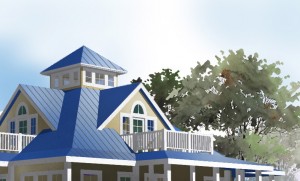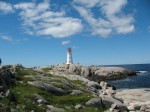As a lighthouse keeper, we watched every Winter and Spring for “Asian” debris to wash ashore around our lighthouse. Mainly we were interested in the glass fishing floats, but we came across hundreds of items every year, and this was in the years 1977 – 2001. Every piece of this debris was usually coated with goose-neck barnacles and other marine life which came from who knows where.
Now we are terrified of a few marine animals on a barge, or motorcycle coming ashore from the tsunami debris? Please read the article below and come to your own conclusion.
In my opinion, debris, with marine life, has been coming ashore around the world. How do you think isolated islands get populated?
***************************
Our Ocean Backyard by Gary Griggs – Article #111
INVASION FROM THE SEA
 A 66-foot long concrete and steel floating dock washed onto the Oregon coast near Agate Beach in early June. The Japanese consulate in Portland confirmed that the dock was one of four used by commercial fishermen for unloading squid and other catch at the port of Misawa, that had been ripped away from the coast during the March 2011 tsunami. It took about 15 months for the floating structure to make the roughly 5000-mile trip across the north Pacific, traveling about 10 miles a day.
A 66-foot long concrete and steel floating dock washed onto the Oregon coast near Agate Beach in early June. The Japanese consulate in Portland confirmed that the dock was one of four used by commercial fishermen for unloading squid and other catch at the port of Misawa, that had been ripped away from the coast during the March 2011 tsunami. It took about 15 months for the floating structure to make the roughly 5000-mile trip across the north Pacific, traveling about 10 miles a day.
Scientists from Oregon State University’s Hatfield Marine Science Center discovered that the dock contained an estimated 100 tons of encrusting organisms, or about 13 pounds per square foot. These included several species of barnacles, as well as mussels, starfish, urchins, anemones, worms, limpets, snails and algae – dozens of species.
Although most of the individual species are unique to Asia, this smorgasbord of marine organisms is similar to what you might find on a wharf or piling along the coast of California. Continue reading Reprint – Our Ocean Backyard – Invasion from the Sea

















